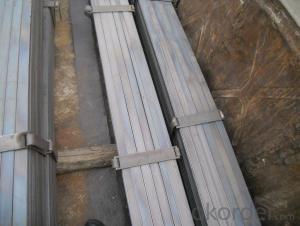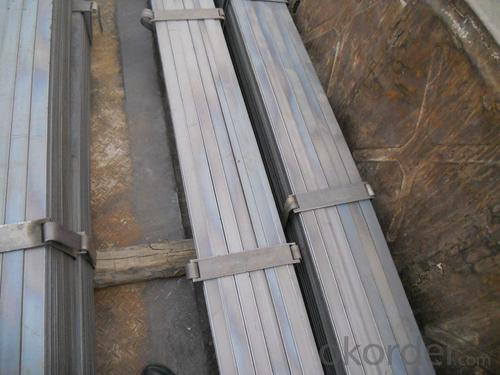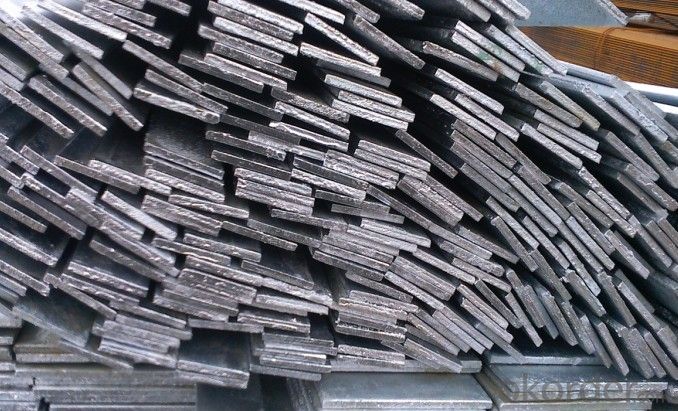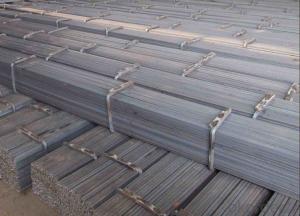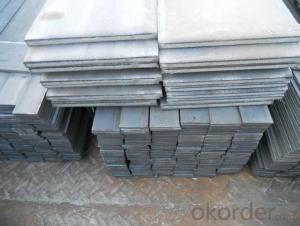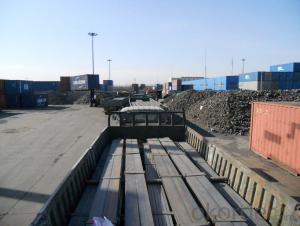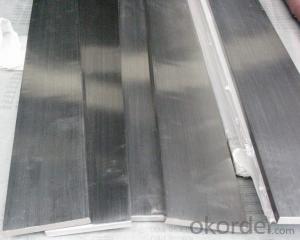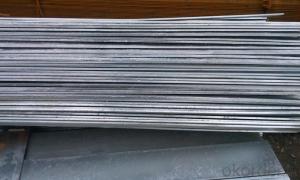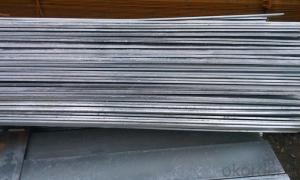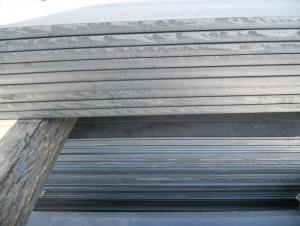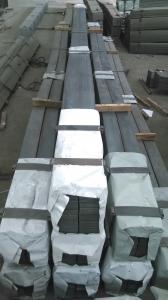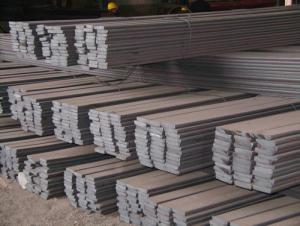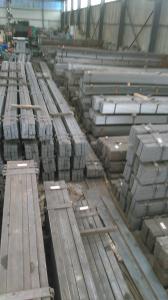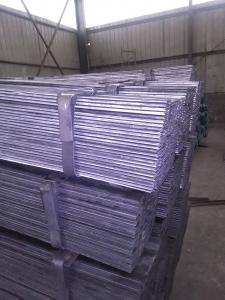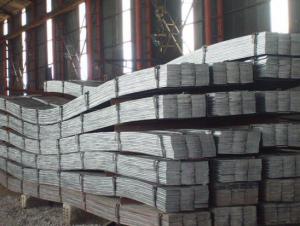flat bar
- Loading Port:
- China Main Port
- Payment Terms:
- TT OR LC
- Min Order Qty:
- -
- Supply Capability:
- -
OKorder Service Pledge
OKorder Financial Service
You Might Also Like
Product Description:
Specification of Mild Steel Flat Bar
Commodity: Mild Steel Flat Bar
Standard: GB;JIS
Material: Q195-235;SS400
Brand name: FLATSPACE
Origin place: China
Thickness: 3mm-30mm
Width:20mm-200mm
Length: Max 12m
Certification: SGS/BV
Chemical composition of Q235
Alloy No | Grade | Element(%) | ||||
C | Mn | S | P | Si | ||
Q235 | B | 0.12—0.20 | 0.3—0.7 | ≤0.045 | ≤0.045 | ≤0.3 |
Physical properties of Q235
Alloy No | Grade | Yielding strength point(Mpa) | Tensile strength (Mpa) | Elongation after fracture(%) | ||||||
Thickness (mm) | Thickness (mm) | |||||||||
≤16 | >16--40 | >40--60 | >60--100 | ≤16 | >16--40 | >40--60 | >60--100 | |||
≥ | ≥ | |||||||||
Q235 | B | 235 | 225 | 215 | 205 | 375--500 | 26 | 25 | 24 | 23 |
Usage/Applications of Mild Steel Flat Bar
Widely used for construction, Machinery manufacturing, Iron tower steel structure, Shipbuilding; Steel grating, Staircase, Bridge, Viaduct, Railway spare parts, Boilers making etc.
Packaging & Delivery of Mild Steel Flat Bar
Packaging Details: The Mild Steel Flat Bars are packed in bundles and loaded in 20 feet/40 feet container, or shipped by bulk cargo ,also we can do as customer's requirements.
Delivery Details:30~45 days upon the receipt of buyer payment by T.T. or L/C.
Production Flow of Mild Steel Flat Bar
The Mild steel flat bar is made through three processes:
1.Feeding the material: Feeding the row material (the steel plate) to Slitting Line.
2.Slitting:The steel plate would be slitted into expected width by lengthways cutter.
3. Leveled and cutting: The plat bar would be ground into level by the grinder and then cut into required length
- Q: What are the different tolerance levels for steel flat bars?
- The tolerance levels of steel flat bars can vary depending on the specific requirements and standards set by the industry or customer. Generally, dimensions for steel flat bars are determined by standard specifications provided by organizations such as ASTM or ISO. These tolerance levels are usually expressed as an acceptable range of variations in dimensions like width, thickness, and length. For instance, width may have a tolerance level of +/- 0.005 inches, allowing the steel flat bar to deviate up to 0.005 inches from the specified width. Similarly, tolerance levels for thickness could be expressed as a percentage or a specific value indicating the allowable variation from the specified thickness. Length tolerance levels are typically given as the maximum allowable deviation from the specified length. It is important to note that different industries or applications may have specific tolerance requirements based on their unique needs. For example, construction or manufacturing industries may have stricter tolerance requirements compared to general-purpose applications. To determine the specific tolerance levels for steel flat bars, it is advisable to refer to industry standards or consult the manufacturer or supplier. They possess the knowledge and expertise to provide accurate information based on the intended usage and specific requirements.
- Q: Can steel flat bars be used in the manufacturing of marine equipment?
- Certainly! Marine equipment can benefit from the use of steel flat bars. This versatile and strong material is frequently employed in the marine industry because of its exceptional durability and resistance to corrosion. When it comes to manufacturing marine equipment, steel flat bars can be utilized to create a variety of essential components, including frames, brackets, supports, and structural elements. The flat shape of these bars facilitates easy cutting, shaping, and welding, making them highly suitable for a wide range of applications in the marine industry. Moreover, to enhance their resistance to saltwater corrosion and guarantee their suitability for marine environments, steel flat bars can be treated with coatings or galvanized.
- Q: Are steel flat bars suitable for structural applications?
- Yes, steel flat bars are suitable for structural applications. They are commonly used in the construction industry for various structural purposes such as beams, columns, and braces. Steel flat bars offer several advantages that make them suitable for structural applications. Firstly, steel is known for its strength and durability, and this applies to flat bars as well. They have a high tensile strength, which allows them to withstand heavy loads and provide structural stability. Steel flat bars also have excellent resistance to bending and twisting forces, making them reliable for structural applications. Additionally, steel flat bars are versatile and can be easily modified or fabricated to meet specific design requirements. They can be cut, welded, drilled, and shaped to create various structural components, offering flexibility in construction projects. Moreover, steel flat bars are available in different sizes and thicknesses, allowing for customization to suit specific structural needs. Furthermore, steel is a cost-effective material for structural applications. It is readily available and has a long lifespan, reducing the need for frequent maintenance or replacements. Steel also has good fire resistance properties, which is crucial for ensuring the safety of structures. In conclusion, steel flat bars are indeed suitable for structural applications due to their strength, durability, versatility, and cost-effectiveness. They are widely used in the construction industry and offer numerous benefits that make them a reliable choice for various structural components.
- Q: Can steel flat bars be used for making fencing or gates?
- Certainly, fencing or gates can be constructed using steel flat bars. Known for their strength and durability, steel flat bars are an ideal option for building fences or gates that must endure diverse weather conditions and potential impacts. By welding or bolting them together, a robust frame can be effortlessly created. Furthermore, their flat shape permits the convenient attachment of other fencing materials such as mesh or pickets. Moreover, steel flat bars are offered in a variety of sizes and thicknesses, enabling customization to meet specific fencing or gate requirements. In summary, steel flat bars are a dependable and favored choice when it comes to constructing resilient and long-lasting fences or gates.
- Q: What are the different types of surface defects that can occur in steel flat bars?
- Some common surface defects that can occur in steel flat bars include scratches, pits, cracks, and rust. Scratches are shallow marks on the surface, while pits are small depressions or cavities. Cracks are more severe, as they can extend through the thickness of the bar. Rust refers to the formation of iron oxide on the surface, which can weaken the steel if not treated. These defects can affect the appearance, integrity, and performance of the steel flat bars.
- Q: Can steel flat bars be used for manufacturing marine equipment or structures?
- Yes, steel flat bars can be used for manufacturing marine equipment or structures. Steel is known for its high strength and durability, making it suitable for withstanding the harsh conditions of the marine environment. Additionally, steel flat bars can be easily shaped and welded, allowing for the construction of various marine equipment and structures such as ship hulls, boat frames, and offshore platforms.
- Q: Are steel flat bars suitable for making architectural or decorative grilles?
- Yes, steel flat bars are suitable for making architectural or decorative grilles. Steel is a strong and durable material that can withstand various weather conditions, making it ideal for both indoor and outdoor applications. Steel flat bars can be easily shaped and welded to create intricate designs, allowing for endless possibilities in architectural and decorative grilles. Additionally, steel can be finished with different coatings or finishes to enhance its appearance and protect it from corrosion. Overall, steel flat bars offer a versatile and reliable option for creating stylish and functional architectural or decorative grilles.
- Q: Are steel flat bars suitable for architectural metalwork?
- Architectural metalwork can utilize steel flat bars effectively. Steel possesses durability and strength, making it an ideal material for various architectural applications. Steel flat bars serve numerous purposes in architectural metalwork, including framing, structural support, and decorative elements. The advantages of steel flat bars in architectural metalwork are abundant. Firstly, their strength and rigidity enable them to handle heavy loads and provide structural stability. Consequently, they are suitable for constructing frameworks, beams, and other load-bearing components. Moreover, steel flat bars are easily manipulated and shaped to meet specific design requirements. They can be cut, welded, and bent to create intricate and customized architectural features. This versatility empowers architects and designers to incorporate unique and visually appealing elements into their projects. Furthermore, steel flat bars are available in various sizes, thicknesses, and finishes, providing designers with a wide range of options. They can be finished with coatings, such as paint or powder coating, to enhance their appearance and protect them from corrosion. Lastly, steel flat bars are cost-effective compared to alternative materials commonly used in architectural metalwork, like aluminum or stainless steel. Due to their affordability, they are a popular choice for projects with budget constraints. In conclusion, steel flat bars are highly suitable for architectural metalwork due to their strength, versatility, and cost-effectiveness. They empower designers and architects to create innovative and visually appealing structures while ensuring the necessary structural support and durability.
- Q: Can steel flat bars be used for making food processing equipment?
- Steel flat bars can be used for making food processing equipment, as long as they are made from food-grade stainless steel. Food-grade stainless steel is specifically designed to be safe for contact with food and is resistant to corrosion, staining, and bacterial growth. It is commonly used in the food industry for various equipment such as worktables, shelves, conveyors, and processing machines. The smooth and flat surface of steel flat bars makes them easy to clean and maintain, ensuring hygiene and preventing contamination. However, it is important to ensure that the steel flat bars used in food processing equipment comply with relevant food safety regulations and standards to ensure the safety and quality of the processed food.
- Q: Can steel flat bars be used in the manufacturing of material handling systems?
- Yes, steel flat bars can be used in the manufacturing of material handling systems. Steel flat bars are commonly used in the construction industry due to their durability and strength. They can be utilized for various purposes in material handling systems, including as supports, frames, guides, and structural components. Steel flat bars offer excellent load-bearing capacity and resistance to deformation, making them suitable for handling heavy loads and ensuring the stability and reliability of the material handling system.
Send your message to us
flat bar
- Loading Port:
- China Main Port
- Payment Terms:
- TT OR LC
- Min Order Qty:
- -
- Supply Capability:
- -
OKorder Service Pledge
OKorder Financial Service
Similar products
Hot products
Hot Searches
Related keywords
